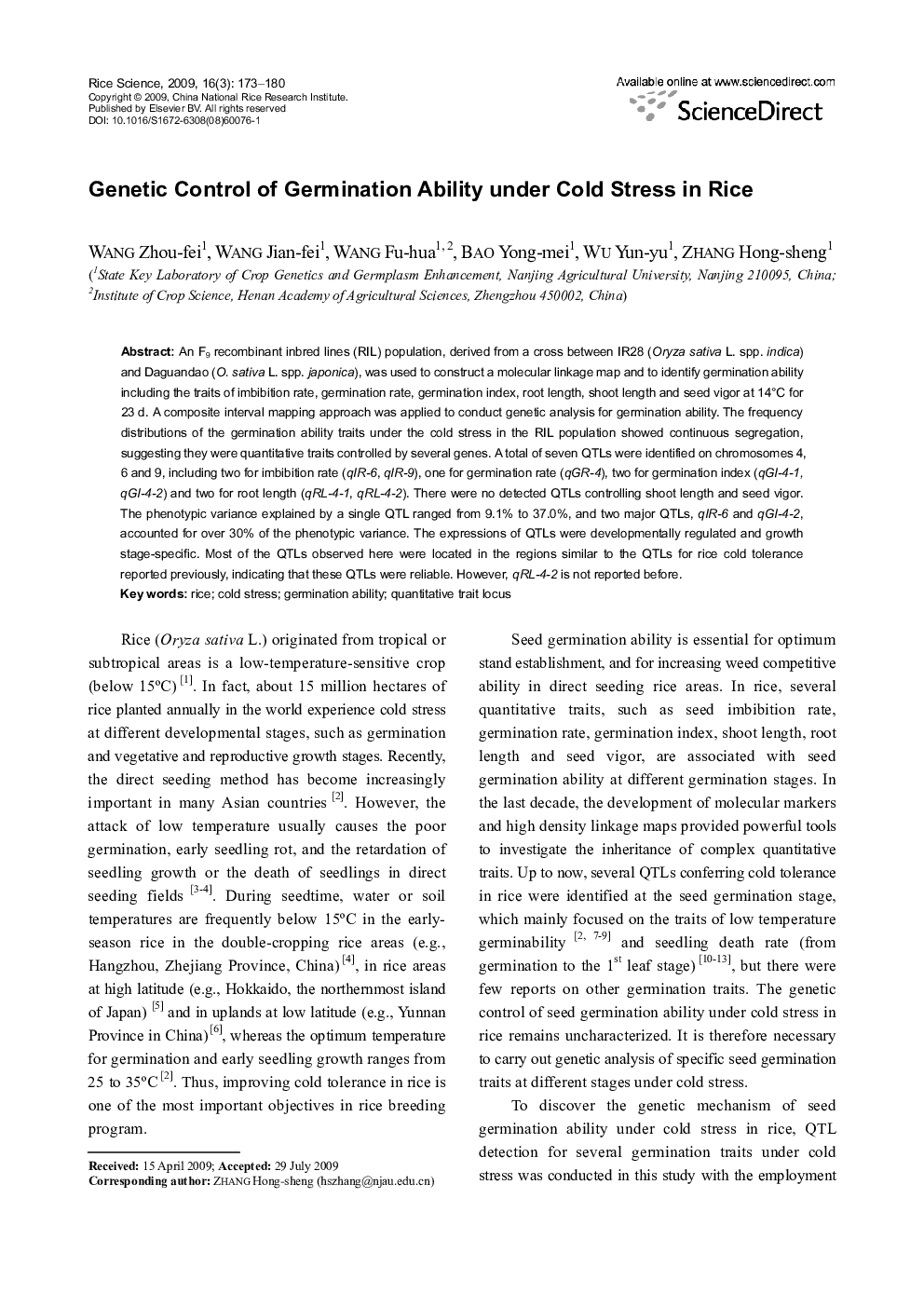| Article ID | Journal | Published Year | Pages | File Type |
|---|---|---|---|---|
| 4502055 | Rice Science | 2009 | 8 Pages |
An F9 recombinant inbred lines (RIL) population, derived from a cross between IR28 (Oryza sativa L. spp. indica) and Daguandao (O. sativa L. spp. japonica), was used to construct a molecular linkage map and to identify germination ability including the traits of imbibition rate, germination rate, germination index, root length, shoot length and seed vigor at 14°C for 23 d. A composite interval mapping approach was applied to conduct genetic analysis for germination ability. The frequency distributions of the germination ability traits under the cold stress in the RIL population showed continuous segregation, suggesting they were quantitative traits controlled by several genes. A total of seven QTLs were identified on chromosomes 4, 6 and 9, including two for imbibition rate (qIR-6, qIR-9), one for germination rate (qGR-4), two for germination index (qGI-4-1, qGI-4-2) and two for root length (qRL-4-1, qRL-4-2). There were no detected QTLs controlling shoot length and seed vigor. The phenotypic variance explained by a single QTL ranged from 9.1% to 37.0%, and two major QTLs, qIR-6 and qGI-4-2, accounted for over 30% of the phenotypic variance. The expressions of QTLs were developmentally regulated and growth stage-specific. Most of the QTLs observed here were located in the regions similar to the QTLs for rice cold tolerance reported previously, indicating that these QTLs were reliable. However, qRL-4-2 is not reported before.
